Recent Articles
WBC11 – A Conference for Wine Bloggers
I’ve been meaning for a week now to write something about the Wine Bloggers Conference (WBC11) that was held in Charlottesville July 22-24. It was a well-planned, well-executed conference, but what I think was most important about it for the purpose of this blog is the way it showcased Virginia’s wine industry. Some 325 bloggers from around the country attended, and they were all exposed in a variety of ways to Virginia wine.
While I was gathering my thoughts, I had occasion to read two really terrific posts from Frank Morgan on his blog, "Drink What You Like." I started to respond to the post, and my piece turned out to be too long for a comment – probably too long for a blog post, for that matter – so I decided to submit a trimmed-back version to his blog and run the extended piece here. If you haven’t yet seen Drink What You Like, trust me, it’s well worth a visit.
What’s great about these two posts (A View from the Punt, I and II) is the perspective it provides from “the other side of the bottle” – the views of those who were pouring their wines at this conference. I had actually been wondering what the winemakers, vineyard managers, marketing directors and others who poured during the conference thought about the event and about the bloggers. They pour (sorry for the pun) their lives into their wines, then pour the wines for people who sniff and swirl it for a few moments before rendering judgments that can be generous in their praise or critical to the point of being mean-spirited. Continue Reading–>
Meet the Vines: Fairfax — The Magnificent Seven
Well, I thought it was time to start introducing everyone to the vines I’ve planted, starting with the Fairfax vineyard. As I’ve said in the past, seven vines hardly constitutes a vineyard, and yet it’s big enough to yield enough grapes for five gallons of wine — about 30 bottles — when I get my first real harvest in three or four years. Not too shabby.
The vines in Fairfax are growing like Topsy, and I wonder sometimes if there’s too much vigor in this vineyard. Vines themselves are capable of amazing growth. They can grow higher than the trees in our yard, and we have really tall trees. But that’s not what we’re looking for. In these first few years, we want to funnel the energy of the vine into the development of the root system, and after that, into the grapes themselves. What we don’t want is for the vine itself to grow out of control, stealing vigor from the roots in the first years and the grapes thereafter.
The rootstock on these vines is of a type known as 101-14, which is a low vigor rootstock. And basically, I think we’re doing okay. We’ll see. But for now, let me introduce you to the Magnificent 7 (and believe me, they are magnificent!), one vine at a time. FYI, they are all Cab Franc.
First, here’s the back row, closest to the backyard fence (you can see a patch of Day Lilies, with a few unpulled weeds, on the other side of the fence). This row also has a rose bush between the two vines.
And here’s the middle row. The vines are all tied to faux bamboo poles. The large stake next to them is a leftover from the initial planting, before I had a fence up and was worried that the lawn service might mow them down without a few obstacles.
Finally, the third row, three vines strong. The middle vine is the giant of the group, nearly five feet tall, and the last is the runt of the litter. But I have every confidence that the little guy will produce great wine grapes someday, maybe the best in the vineyard.
So there it is. The vineyard ain’t huge, but it has loads of personality! And here’s a couple of shots that illustrate the humble beginnings of this patch of vines.
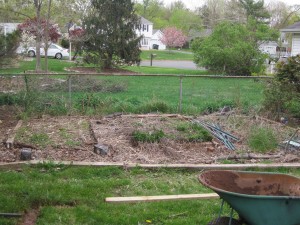
And here's a wider shot. Note the wheelbarrow in the foreground, a sure sign that I'm about to get my hands dirty.
The Agony of Dropping Fruit
This is only a guess, albeit a somewhat educated guess, but I suspect every vineyard worker has the same uneasy, guilty feeling the first time he drops fruit from a vine.
By dropping fruit, I mean walking through the vineyard, from one vine to the next, and cutting off perfectly good clusters of grapes and letting them fall to the ground. It seems wasteful, and when you see a cluster of nearly perfect grapes lying on the ground next to your feet, you feel like a butcher. But you have to remain focused and keep your eye on the prize.
“Think about the wine,” said Julien Durantie, the vineyard manager at DuCard Vineyards. Ah, yes, the wine. Don’t worry about the grapes on the ground that will soon rot and return to the soil to nurture future crops. Think ahead a year or more to the wine that will be made from the fruit that remains.
The idea behind dropping fruit is simple: the vine has only so much energy, and by reducing the number of clusters, you end up with a more concentrated juice and much better, much more intense wine. In a sense, this is a continuation of the process we’ve been engaged in throughout the growing season. Early on, we thinned out the shoots, leaving behind a smaller number of shoots that we hoped would produce high-quality grapes. As we moved through the season, pulling leaves to open up the canopy, we continued to remove suckers, laterals, and extra shoots that would deprive the vine of its vigor.
Removing suckers and thinning shoots was one thing. Clipping off beautiful clusters of berries that were turning into wine grapes, was much harder. I tried to keep my mind focused on the wine.
As was the case in many classes before, I found myself nearly paralyzed at the start, not quite remembering what I had been told, and staring at the vine, afraid to make the first cut. And so, I spent time separating out vines that had become tangled, pulling some laterals (which look like a small, separate leaf system), and considering whether to cut this clump or the next one. And finally, as always, I called Scott Eliff, the vineyard’s owner, or Julien, and begged for help.
We were working just at the onset of veraison, the time in which the berries change color. Here and there, we spotted a few cab franc grapes turning purple, but the vines we actually worked on were Viognier, Virginia’s signature white grape. (Actually, while the Virginia Wine Board has declared Viognier to be the Commonwealth’s Signature Grape, I prefer to think of it as the signature white. Cab Franc and Petit Verdot are my choices for reds.
In any event, a little bit of my heart lay on the ground with each cluster of grapes. And I was only the hired (well, volunteer) help. I can’t imagine how agonizing it is for the owner of the vineyard to drop fruit, knowing he or she is reducing the vineyard’s yield significantly with each clip of the pruning shears.
Fortunately, this is one kind of heartache that can be cured by opening and tasting a bottle of wine that has benefitted from the “Green Harvest” of dropping fruit. Wine is often said to be made in the vineyard, and the best is made by vineyards like DuCard that are willing to sacrifice quantity for quality.
Vineyard Diseases and How to Cure Them
It’s scary to think about how many predators are out there waiting to attack the average vineyard. Birds, bees, foxes, rabbits, deer – Even Bambi can’t be trusted! – and a host of insects, from the potato leafhopper to the Japanese Beetle, want nothing more than to devour the vines, from their leaves on down to the grapes themselves. And that isn’t counting the fungi.
Last weekend at Monticello, Gabriele Rausse taught a class on vineyard diseases that was as wonderful (Gabriele and Monticello) as it was depressing (birds, bees, deer – you get it). The predatory Bambis of the world can be controlled fairly easily with fences. Birds, which begin taking a serious look at the vines after the sugar level rises almost to the point where it is time to harvest, can be scared away with foil streamers that are hung at intervals so that they fly in the breeze.
But fungi are a different story. They require lots of attention, and no small amount of chemicals. Unlike California’s wine valleys, where vines grow in dry heat with cool nights and little rain, Virginia vineyards are subject to heat, humidity and lots of rain. (Especially this year.) All of which provides a good, but hopefully not perfect, environment for a variety of fungal diseases to take root, so to speak. Black Rot, Downy Mildew, Powdery Mildew, Botrytis (and not the good kind of Botrytis, the “noble rot” responsible for Sauternes) and many other diseases just lie in wait for the conditions that enable them to ruin a vineyard.
So, that means spraying. Not just once or twice, but routinely, weekly and especially after three-quarters of an inch or more of rain. We’d love to go organic and dispense with the spraying, but it’s not possible in Virginia, at least not with vines. I don’t know if other fruits and vegetables can be grown in Virginia without spraying, but I’m inclined to think you can’t. Certainly, Virginia Tech’s Cooperative Extension service web site has tons of information about spraying programs for fruit and vegetables, which implies that fungicides are needed. But whatever the case for other types of fruit, wine grapevines require spraying.
That’s also true in other environs. Gabriele said they had to spray in his native Italy (the Veneto region), for example. So, it’s not a crime to spray. But it does make for a lot of work and expense, one of the reasons, in fact, that Virginia wine is so expensive.
And by the way, if you're interested in this subject, the best source of information availale, at least for Virginia viticulturists — and probably for grape farmers everywhere — is Mizuho Nita's blog. It's a must-read for anyone interested in growing wine grapes in Virginia.
Spraying is a discipline, and it's one of those things you have to do when it's needed, whenever it's needed, with no exceptions. Hard work, for sure. But I think it's worth it, and that the end result of all that pest management will be wine that is truly memorable.
The Potato Leafhopper Saga, Part II
Continuing the Potato Leaf Hopper saga, which strictly speaking hasn’t yet risen to the level of a saga, it looks like we’re making some progress. We evaluated our Nelson County vines over the weekend and are reasonably happy with what we saw. The new leaves looked healthy and disease free, and the vine seems to be growing nicely (well, with the exception of one vine, which appears to be the runt of the litter).
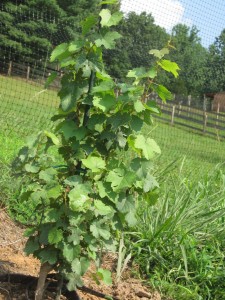
- This Cab Franc vine is growing slowly, but it appears healthy. No holes in the leaves from Leafhoppers, and good color.
Most important, the Potato Leafhoppers appear to have all but vanished. Two weekends ago, they were gone. Last weekend, we found one or two, and removed them by hand. We’ll check again next weekend, but for now, the Vineyard Goddess is resting easy, and we doubt we’ll need to hit the vines with another dose of pesticide.
Now, I’m sure some of you are wondering if I was being a bit overly dramatic. You’re thinking, yeah, the Potato Leafhopper is probably some kind of mean little insect, Bob, but in a world full of pests, it’s pretty small fry. It’s not like Donald Trump parked himself in your vineyard and let the property go to seed. (Actually, that would be the vineyard some 30 minutes down the road.)
But trust me, the Potato Leafhopper is a pest to be taken seriously. Consider this statement from the Compendium of Grape Diseases, an authoritative guide to vineyard problems: “Few insects have plagued grape growers during the last century more than leafhoppers.”
According to the Compendium, the potato leafhopper breeds in the Gulf Coast states over the winter, then grow in number through March and April before migrating northward, distributing themselves over most of the U.S. The leafhopper harms grapes “by mechanically injuring and blocking vascular tissue, by injecting toxic enzymatic secretions, or by a combination of both mechanisms.” You ever see Trump blocking any vascular tissue?
In any event, it appeared that the Leafhopper was doing considerable damage to the vineyard, and we were ready to go to war with it. With luck, we might have put that pest behind us, which will free us up to deal with the myriad other problems that plague vineyards. Like overly acidic soil. Or Downey Mildew. And someday, maybe, birds, foxes and bees. Stay tuned for the next report from the front.
Studying Viticulture at Monticello
It’s hard to imagine a better venue for the study of viticulture than Monticello, the home of America’s first great connoisseur of wine, and so I counted myself fortunate that this weekend’s class on vineyard diseases was taught on the small mountain that was Jefferson’s home.
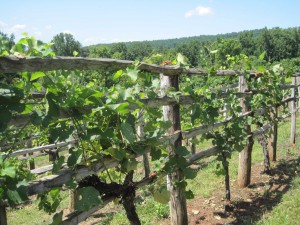
The vineyard at Monticello - just as Jefferson hoped it would be. Note the ancient trellising system.
I’m sure someone will question my description of Jefferson as the nation’s first great wine connoisseur, preferring another term in its place, but I think my words cover the subject better than any others. Jefferson is sometimes called America’s first great viticulturist, and the notebooks he kept while touring the world’s great wine regions reflect an extraordinary knowledge of the subject. Sadly, though, he was never successful in growing wine grapes at Monticello. But he loved wine – that too comes across in his notebooks – and he devoted huge sums of money, as well as significant amounts of his time, toward procuring and enjoying wine (more on this subject in a future post), and so it seems most accurate to think of him as not just a lover of wine, but as the young nation’s foremost authority on the subject. A connoisseur, and yes, much more than that.
Of course, Jefferson was an authority on many things, which is another reason why it seemed so special to be part of a class at Monticello. There are few people today, indeed, few people in history, whose expertise ranged over so many subjects. When you
consider how many hours that men of his age spent on the things we devote minutes or hours to – letters and travel, among them – it is nothing short of astonishing that Jefferson accomplished so much.
And for those of us (hopefully all of us) who care about the freedoms inscribed in the First Amendment, Jefferson is a name to be revered. While Madison may be the author of the First Amendment, Jefferson’s influence was vital. Free speech, free press, and the separation of church and state were central concerns for him. The Cavalier Daily, the student newspaper of the University of Virginia, where I worked for two years while occasionally attending classes, cited Jefferson proudly and perhaps defiantly in its masthead: “For here we are not afraid to follow truth wherever it may lead, not to tolerate any error, so long as reason is left free to combat it.” I always thought that quote was the most elegant and eloquent summation of the argument for a free press that I have ever heard.
Back to the class. It was taught by Gabriele Rausse, Monticello’s assistant director of gardens and grounds and the father of Virginia’s wine industry. Gabriele arrived in the United States in 1976 from his native Italy, thinking he needed to learn a bit more English before returning to the wine country of Australia, one of several wine regions he apprenticed in. At that time, the prevailing wisdom was that Vitis Vinifera, the great wine grapes of Europe, could not be grown in Virginia. Gabriele decided to contest the prevailing wisdom, even though, as he told us on Saturday, everyone thought he was crazy.
But of course, he was right.
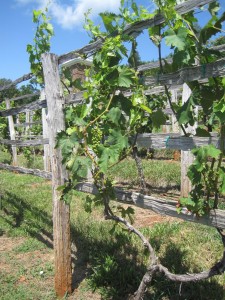
- Mammolo Toscanas at Monticello – and, yes, now you know where we got our Mammolos and why they are so important to us.
Today, Gabriele is the state’s best known vineyard consultant, and the wines he makes himself are elegant in the best traditions of Europe and, yes, Virginia. More on Gabriele in a future post, but for now, let me just say, that if you are lucky enough to taste his wines at a Virginia wine show, you should buy some, as it may be the only chance you get. His winery produces no more than 1,300 cases a year, so they are not only treasures, but they are rare.
Monticello and Gabriele. Life doesn’t get much better. I’ll post something in a few days about the class itself, but for now, I’ll just say that for those of us involved in the Virginia wine industry, even amateurs like me, the spirit of Jefferson will always be an inspiration.
Coming up next weekend: the North American Wineblogger’s Conference in Charlottesville. It says a lot about how far the Virginia wine industry has come that this conference is being held in Charlottesville, in the center of the Monticello AVA. And one of the events I am looking forward to most is the wine tasting at Monticello. It’s not like I’ve never been to a wine tasting, but the very idea of tasting wine at the home of Jefferson is humbling, to say the least.
I’m sure Jefferson will be watching over us, and wishing for just a sip of a true Virginia wine.
The Vineyard Goddess and the Potato Leafhopper
The Vineyard Goddess was not happy.
Our Nelson County vineyard was looking decidedly unhealthy. The leaves on the vines were pale, and they were full of holes. My wife, the Vineyard Goddess, spent hours inspecting the vines, looking through books, and searching the Internet for answers. Finally, she decided to email a photo of the not-so-healthy leaves to a Virginia Tech grape pathologist.
Virginia Tech’s Agricultural Research and Extension Center is a wonderful resource for Virginia Viticulturists, and they could not be more helpful. Within a few hours, she had an answer. It was most likely an insect that was doing the damage.
Although we hadn’t seen any bugs in the vicinity, the Vineyard Goddess decided to stake out the seven vines until she found what she was looking for. She didn’t have to wait long. There, on our Mammolo Toscano – I could almost hear her shriek, “not the Mammolo!” – were two tiny green bugs. They moved fast, but not as fast as the Vineyard Goddess.
Pinching one between thumb and forefinger, she carried it back to the house, combed through our viticulture books as well as the Internet, and made a positive ID. It was a Potato Leafhopper. We had never heard of a Potato Leafhopper, and had no idea why it had given up on potatoes and turned to our vineyard for nutrition. But it had.
It turns out that the Potato Leafhopper not only likes to munch on grape vine leaves, but it produces a toxic saliva that can dry up the leaves and mimic drought conditions. That explained a lot, including the curled leaves on our vines
VG immediately dusted the vines with a cure-all pesticide, and we both crossed our fingers.
Stay tuned for the next report from the front lines of our battle with this pest.
Not just a tasting room: Touring Sonoma’s Wine Valleys
Last week, the UPS truck brought a box of wine from California, reminding me just how late I am in writing something about our tour of Sonoma's Russian River and Dry Creek Valleys. The box contained bottles we had purchased in visits to five separate vineyards, and each told its own story — one of terroir, another of organic viticulture methods, and yet another of vines that were planted in the century before the last one.
It was a wonder that we ended up collecting any of these bottles and their stories. When we first 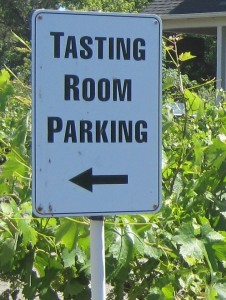 started planning the tour, I had thought we might visit some of the vineyards that make wines I know and like, such as Simi, a Healdsburg-based winery that makes a Cab I enjoy. But we signed up with Valley Wine Tours, and in the weeks leading up to the trip, I exchanged a series of emails with our tour guide, Bob Howells, who helped me think through the options. "We can go there," he said about one of my choices. "But it's just a tasting room."
started planning the tour, I had thought we might visit some of the vineyards that make wines I know and like, such as Simi, a Healdsburg-based winery that makes a Cab I enjoy. But we signed up with Valley Wine Tours, and in the weeks leading up to the trip, I exchanged a series of emails with our tour guide, Bob Howells, who helped me think through the options. "We can go there," he said about one of my choices. "But it's just a tasting room."
That made sense. We were looking for something more than another tasting room experience. As we get closer to planting vines (beyond the 14 experimental vines we are tending on two different properties), our primary focus is on educational opportunies.
Martinelli converted this lovely barn into a tasting room.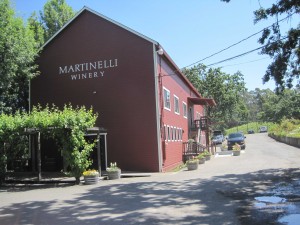
What we were looking for on this trip were wineries where we'd have an opportunity to chat with winemakers, vineyard managers and owners. Until my email exchange with Bob, it hadn't occured to me that we wouldn't get that at the larger wineries that ship back to the east coast.
After providing that bit of counsel, Bob was extremely helpful in planning our itinerary. I was particularly interested in three Sonoma AVAs — the Alexander Valley, Dry Creek Valley and the Russian River Valley — and he provided a list of six vineyards for each. After a couple of hours of research at Total Wines in Chantilly, I discovered that the wines from these vineyards were generally not available in stores on the east coast.
So far, so good, then. We would visit wineries that we would otherwise never experience. We decided to eliminate Alexander Valley, even though it is a great terroir for Cabernet, my favorite grape varietal. We couldn't do all three, and Bob said it would be easier to get the experience we were looking for in the other two AVAs. And he promised we would have an opportunity to discuss wine with knowledgable people who are passionate about what they do.
We visted five wineries that day: Martinelli Winery, Inman Family Wines, Battaglini Estate Winery, Talty Vineyards and Winery, and Truett-Hurst Vineyards. We loved them all, each for different reasons and each because it contributed in a different way to our education. Martinelli, for example — perhaps the largest of the vineyards we visited — was all about terroir. The Martinelli family has more than 300 acres planted, but only 15 percent goes to their own labels, while the rest is sold to other wineries. We tasted Chardonnays from three separate vineyards that are part of their property, and each was distinctly different. The Woolsey Road vineyard, for example, is a packed-clay soil, and the wine had pronounced mineral notes, while the Three Sisters vineyard, more of a sandy loam soil, featured a much softer, more buttery Chard.
While I liked all five vineyards, I'll focus on two here, Inman and Battaglini. Both were extemely generous with their time, and both offered the kind of unique educational experience we were seeking.
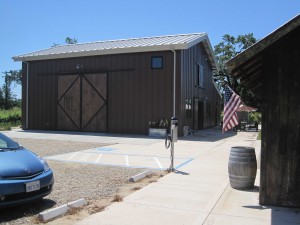
- Inman Family Wines is a small, family-run vineyard and winery focused on the production of elegant Pinot Noirs.
We bumped into Kathleen Inman even before we got into the winery. She was busy arranging outdoor furniture to prepare for the day's visitors, but she took out an hour of her time out to talk to us about the vineyard. Kathleen is big into organic viticulture, and she discussed the organic sprays they use, which are not as easy to find as the non-organic variety and significantly more expensive. Some of the vineyard consultants I've talked to back on the east coast are dismissive of organic sprays, but Kathleen is getting great results.
We spent some time talking about canopy management, including her determination to remove all lateral shoots from the vines. Laterals are extraneous shoots situatued just above a leaf, which are in a sense "a shoot coming out ot a shoot." The leaf is valuable, since it contributes to photosynthesis. The lateral simply drains energy from the vine. In addition, removing laterals provides a bigger bang for the buck when thinning the canopy. Pulling a lateral removes three or more leaves at once, compared to the removal of a single leaf. Kathleen also showed us the equipment she uses to make "compost tea," a liquid brewed from compost that can be used to add nutriets to the soil or to protect the canopy from disease.
One surprise: To the maximum extent possible, Inman uses natural yeasts, the yeasts that are present on the skin of the grapes. Many, perhaps most winemakers, prefer to kill the natural yeast with potassium metabisulphite, and then add a specific commerically-made yeast to start the fermentation. I don't think I would have the courage to rely on natural yeasts, but after tasting the wine, I don't see how anyone can argue with Kathleen's methods.
And yes, we finally did get around to tasting. We were thrilled in particular with the Pinots, which were lush and balanced with nice acidity — perfect for food. Pinot Noir is one of the most difficult grapes to grow, and Kathleen's passion for Pinot Noir is clearly evident in her wines. In addition to some Chardonnay, we purchased the 2007 Thorn Ridge Pinot Noir. While I don't pretend to have the world's most sophisticated sense of smell or taste, I picked up blackberry and dark fruit on the nose, and tasted dark cherry in particular on the palate. A fabulous Pinot.
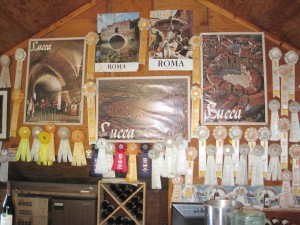
- Joe Battaglini's tasting room looks like a page out of a history book. Nothing fancy, but the wine and Joe's company are what counts here.
At Battaglini, we tasted Zinfidels that gave new meaning to the words, "old vine." Owner Joe Battaglini, who hails originally from Luca, Italy, purchased 30 acres in the Russian River valley in 1998, inheriting vines that are now 126 years old.
This is a one-of-a-kind operation. The tasting room is a small corner of what appears to be an old shed, decked out with pictures of Luca, Rome and other Italian cities, plus the many ribbons he's won in wine competitions over the years. After tasting, and before lunch, which we ate at a shaded table outside the tasting room, Joe took us on a tour of the vineyard. The old vines produce very little in the way of grapes, and a corporate-owned winery would have torn them out years ago in favor of young, higher-productivity vines. Joe dotes on his old vines, even giving them names. One, for example, looks like a huge chair, and so Joe named it "the throne."
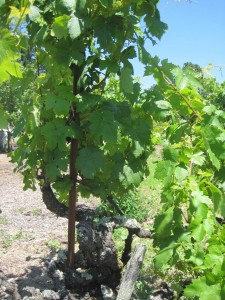 The first thing you notice about the old vines is the lack of trellising. "That's how it was done back then, and how it was when I bought the vineyard," he said. "I didn't want to change anything."
The first thing you notice about the old vines is the lack of trellising. "That's how it was done back then, and how it was when I bought the vineyard," he said. "I didn't want to change anything."
Of course, some things are changing. A modern tasting room is under construction. I suppose it will serve the needs of the winery better, but I can't help but think it will lack the charm of the little shed with the bar and the photos, which remains locked until visitors show up and Joe comes out to greet them. The winery itself is also modern, and after we finished eating the picnic lunch Bob had brought for us, Joe popped out again and offered us a tour.
At the winery, you can choose from 28 Zinfandels, six Petite Sirahs and four Chardonnays. Not a bad selection. We bought a half dozen Zins, and have already enjoyed one. They're ageworthy, but I doubt they'll get that opportunity.
Me, Joe and the Vineyard Goddess, after a tasting.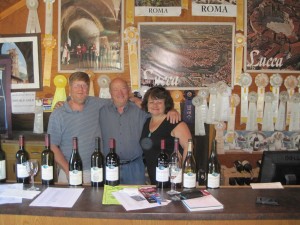
Finally, returning to the sub-theme of this post, the afternoon before this tour, we passed by the Benziger Family Winery after a visit to the Jack London state park (which includes a great museum, with lots of history related to this uniquely American writer) and decided to stop in. We've been there once before, and enjoyed it thoroughly. On our last visit, we took advantage of the tram tour, which shuttles you through the vineyard and on to the crush pad, the fermentation facility and the barrel caves. If you don't take the tram tour, you can still wander through the biodynamic vineyard exhibit, a garden-like setting that explains the vinyeard's green approach to growing grapes.
This time, we arrived shortly before closing, and had time for a tasting only. It was $10 (perhaps a bit steep?), but the wines were good and the setting quite pleasant. Our server was articulate and friendly, and I asked him how long he had been working at Benziger. Thirteen weeks, he said, which explained why he didn't know much more than might have been contained on a script. He wasn't bad, by any means, just not knowledgeable enough to go beyond some basics on each of the wines.
Benziger: It's hard to imagine a more beautiful vineyard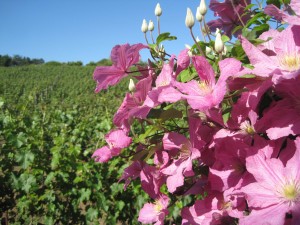
Which made me realize, a day before we began our tour, how right Bob had been in steering me away from a winery I loved that would have been "just a tasting room," in favor of experiences I'll remember for the rest of my life.
Canopy Management, Part II
Here’s some pictures from the weekend class at DuCard Vineyard, thanks to classmate Margaret Frazier, who I have no doubt will one day soon be producing very high quality Virginia wines.
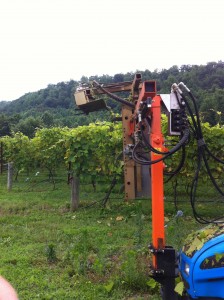
This is the hedger used to trim the tops of the vines in the lyre trellis. It's a bit hard to tell, but the arm of the hedger has whirling blades on both sides, which cuts one arm of the vines.
Canopy Management (And Other People’s Vines)
There's something quite liberating about working on someone else's vines.
Through a class at Piedmont Virginia Community College, we've worked on vines at DuCard Vineyeards now on five separate occasions, starting with dormant winter pruning in late winter and moving on through various stages of the vine's annual growth. On each occassion, I started off, as did many of my classmates, staring at a vine, certain that I was about to ruin it, if not forever, than surely for the season, perhaps costing DuCard a small but meaningful share of its harvest.
Most often, I wanted for DuCard's ever-patient owner, Scot Elliff, or his equally patient vineyard manager, Julien Durantie, to show me just one more time how to do whatever it was that we were expected to do that day. At some point, I would begin working on my own, tentatively at first, but with increasing confidence until at some point, I thought myself almost ready to work without supervision. Continue Reading–>

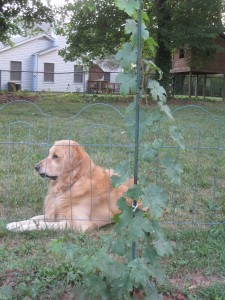
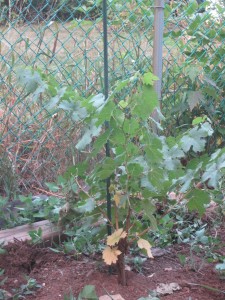
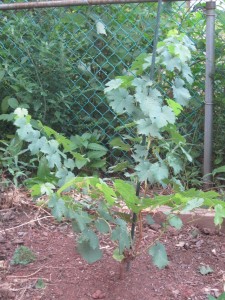
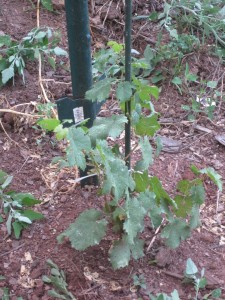
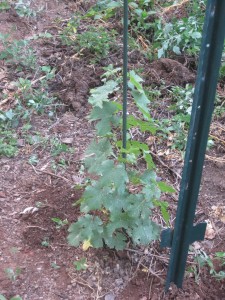
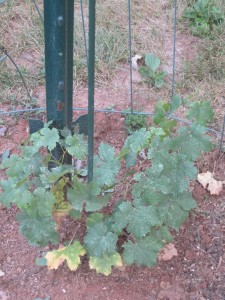
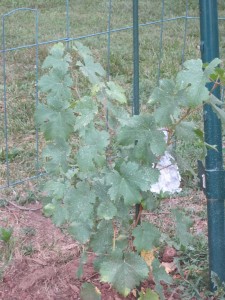

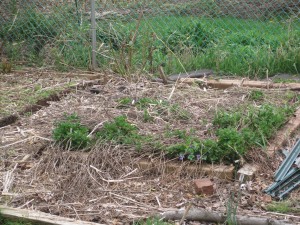
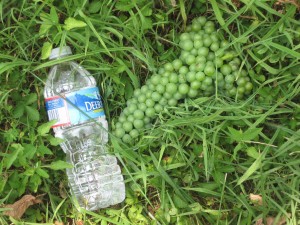
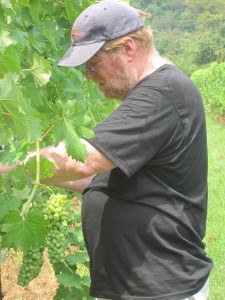
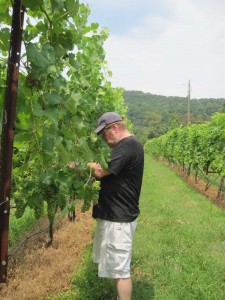

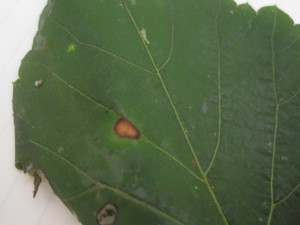
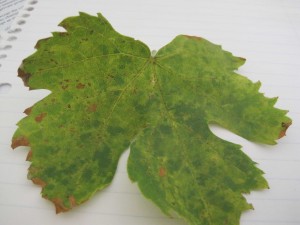
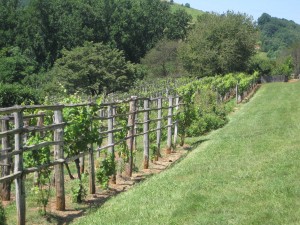
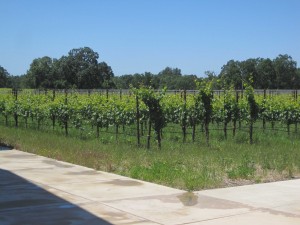
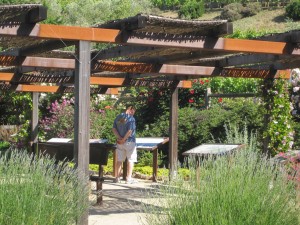
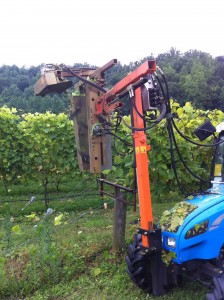
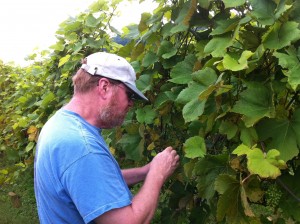
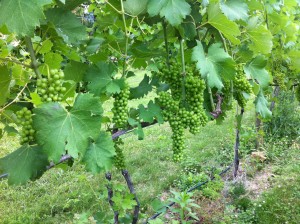


Recent Comments